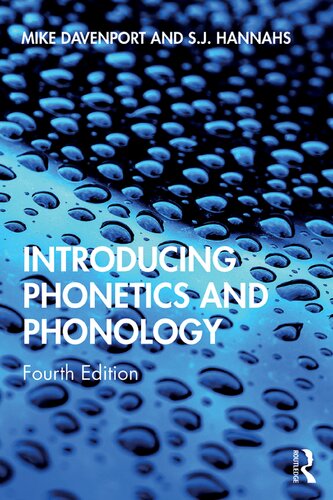

Most ebook files are in PDF format, so you can easily read them using various software such as Foxit Reader or directly on the Google Chrome browser.
Some ebook files are released by publishers in other formats such as .awz, .mobi, .epub, .fb2, etc. You may need to install specific software to read these formats on mobile/PC, such as Calibre.
Please read the tutorial at this link: https://ebookbell.com/faq
We offer FREE conversion to the popular formats you request; however, this may take some time. Therefore, right after payment, please email us, and we will try to provide the service as quickly as possible.
For some exceptional file formats or broken links (if any), please refrain from opening any disputes. Instead, email us first, and we will try to assist within a maximum of 6 hours.
EbookBell Team

4.8
84 reviewsIntended for the absolute beginner, Introducing Phonetics and Phonology requires no previous background in linguistics, phonetics or phonology. Starting with a grounding in phonetics and phonological theory, the book provides a base from which more advanced treatments may be approached.
It begins with an examination of the foundations of articulatory and acoustic phonetics, moves on to the basic principles of phonology and ends with an outline of some further issues within contemporary phonology. Varieties of English, particularly Received Pronunciation and General American, form the focus of consideration, but aspects of the phonetics and phonology of other languages are discussed as well. This new edition includes revised exercises and examples; additional coverage of typology, autosegmental phonology and articulatory and acoustic phonetics; broader coverage of varieties that now features Australian English; and an extended Chapter 7 that includes more information on the relationship between phonetics and phonology.
Introducing Phonetics and Phonology,4th Edition remains the essential introduction for any students studying this topic for the first time.